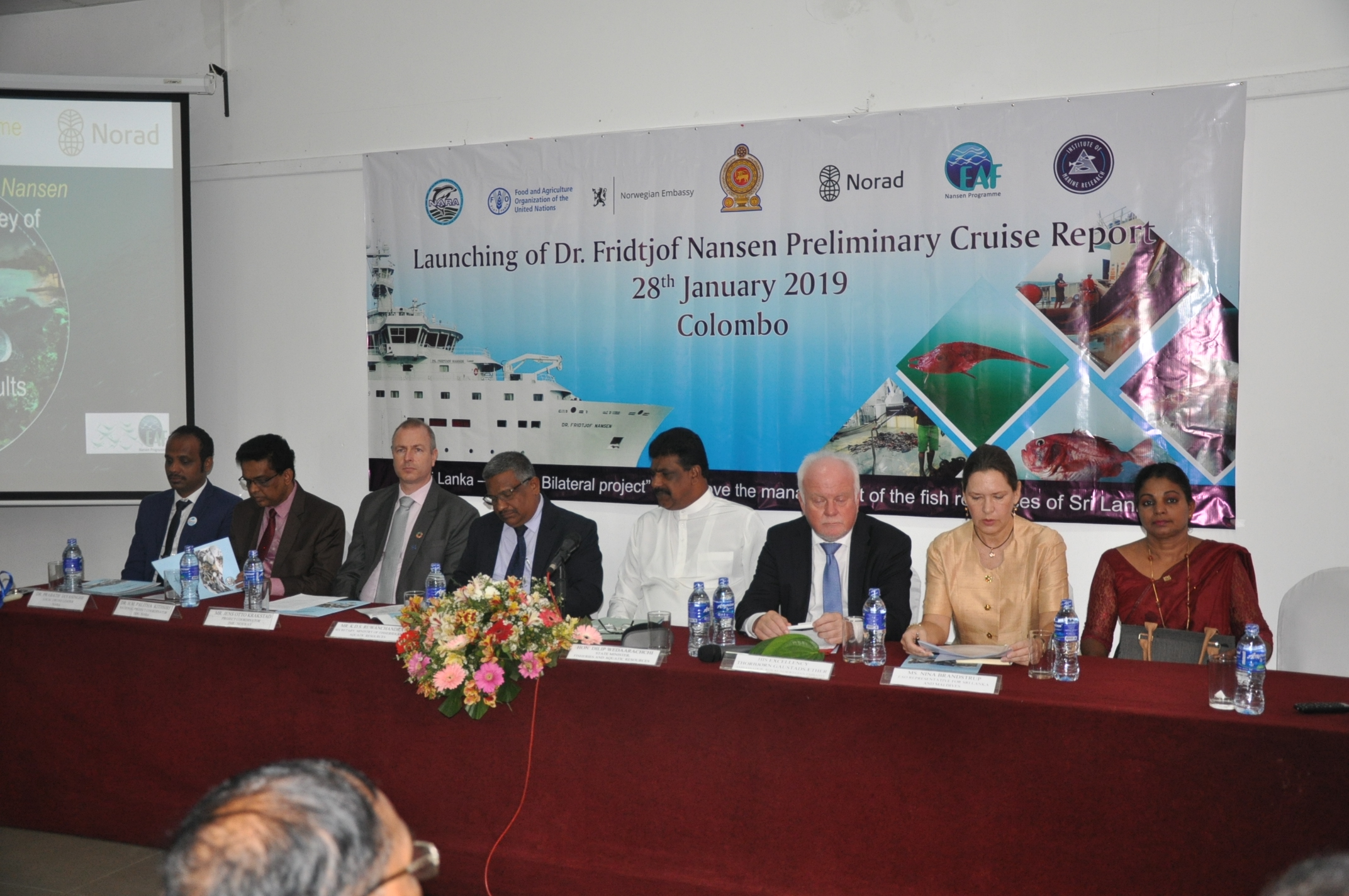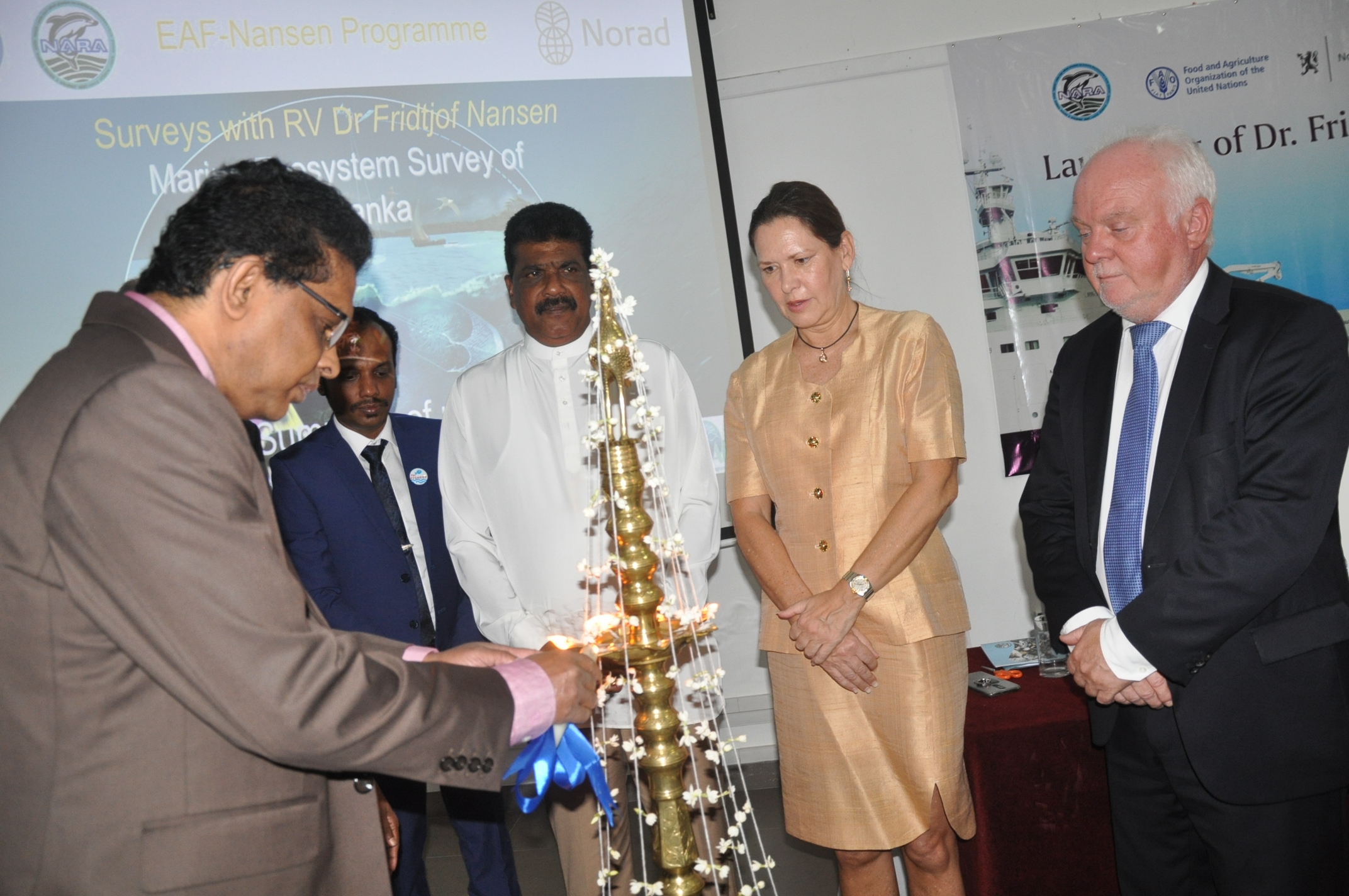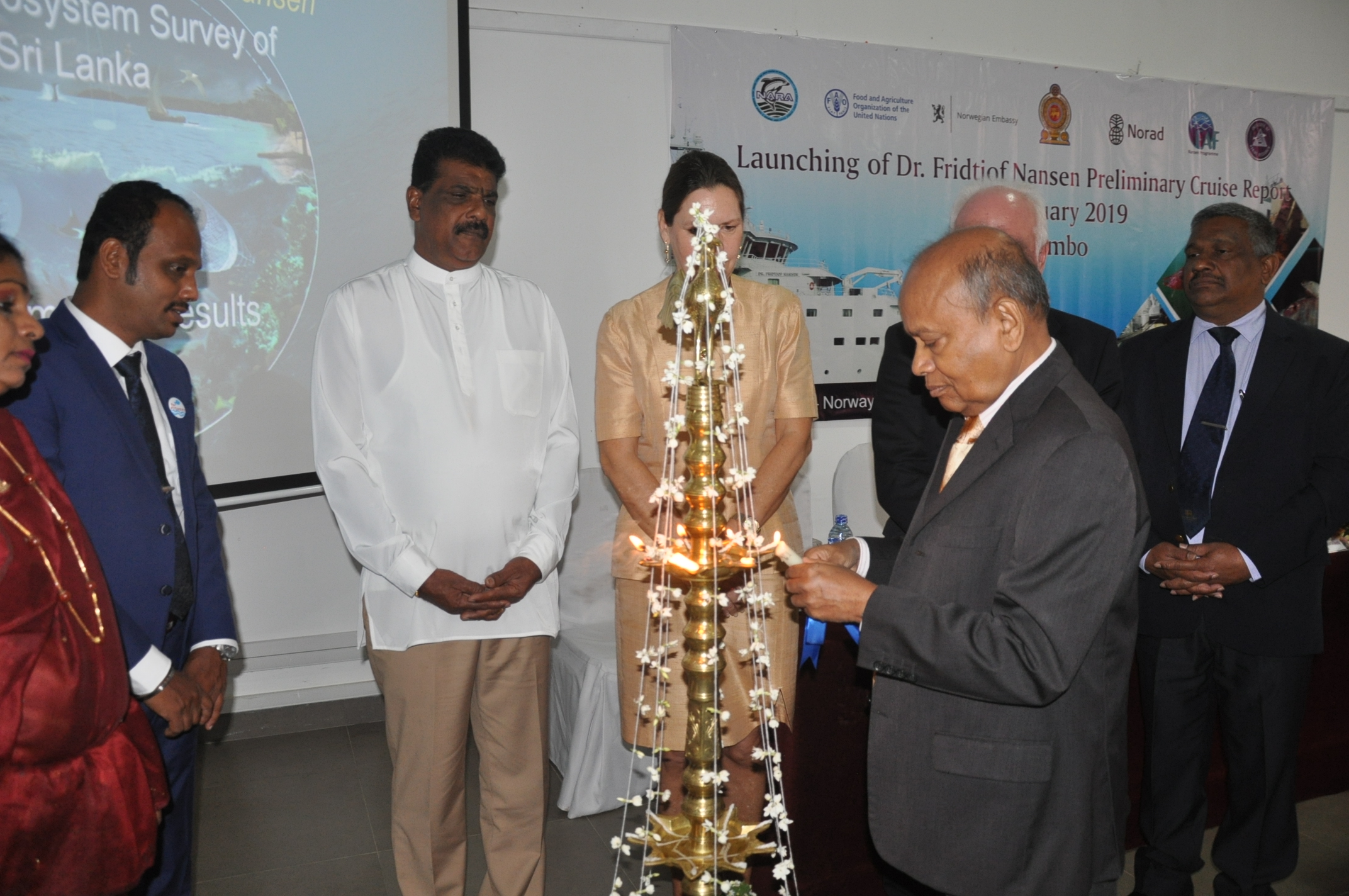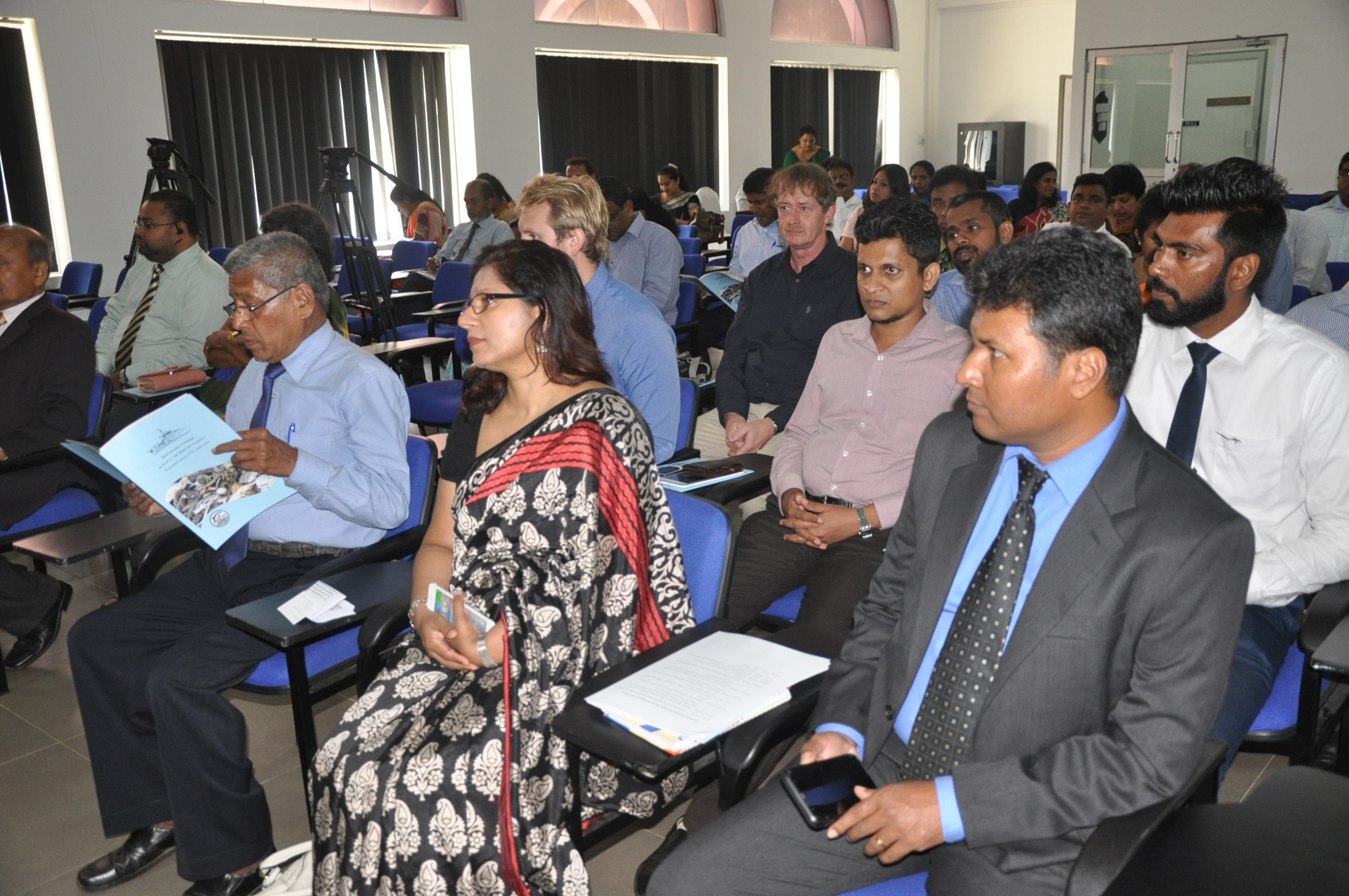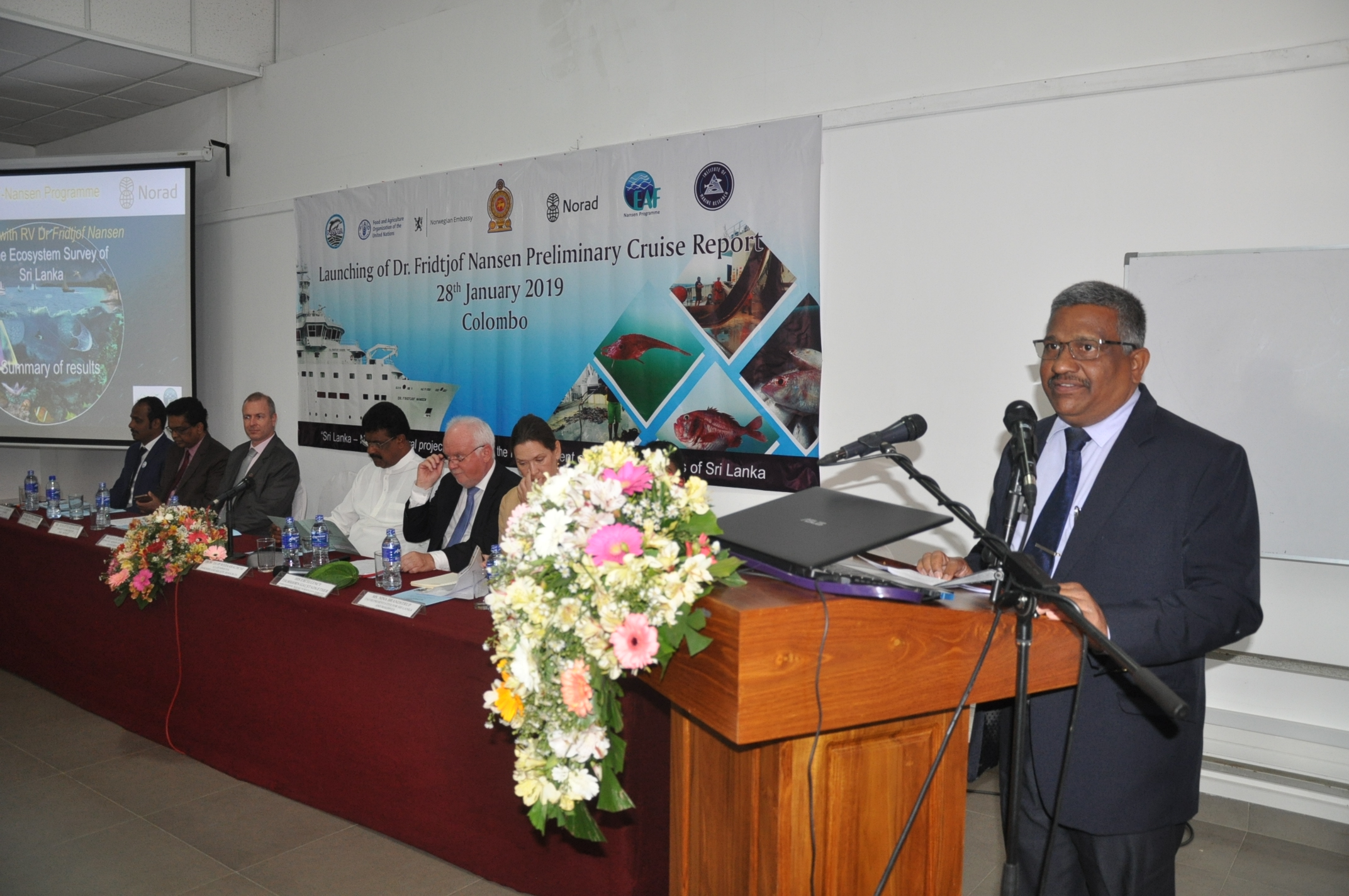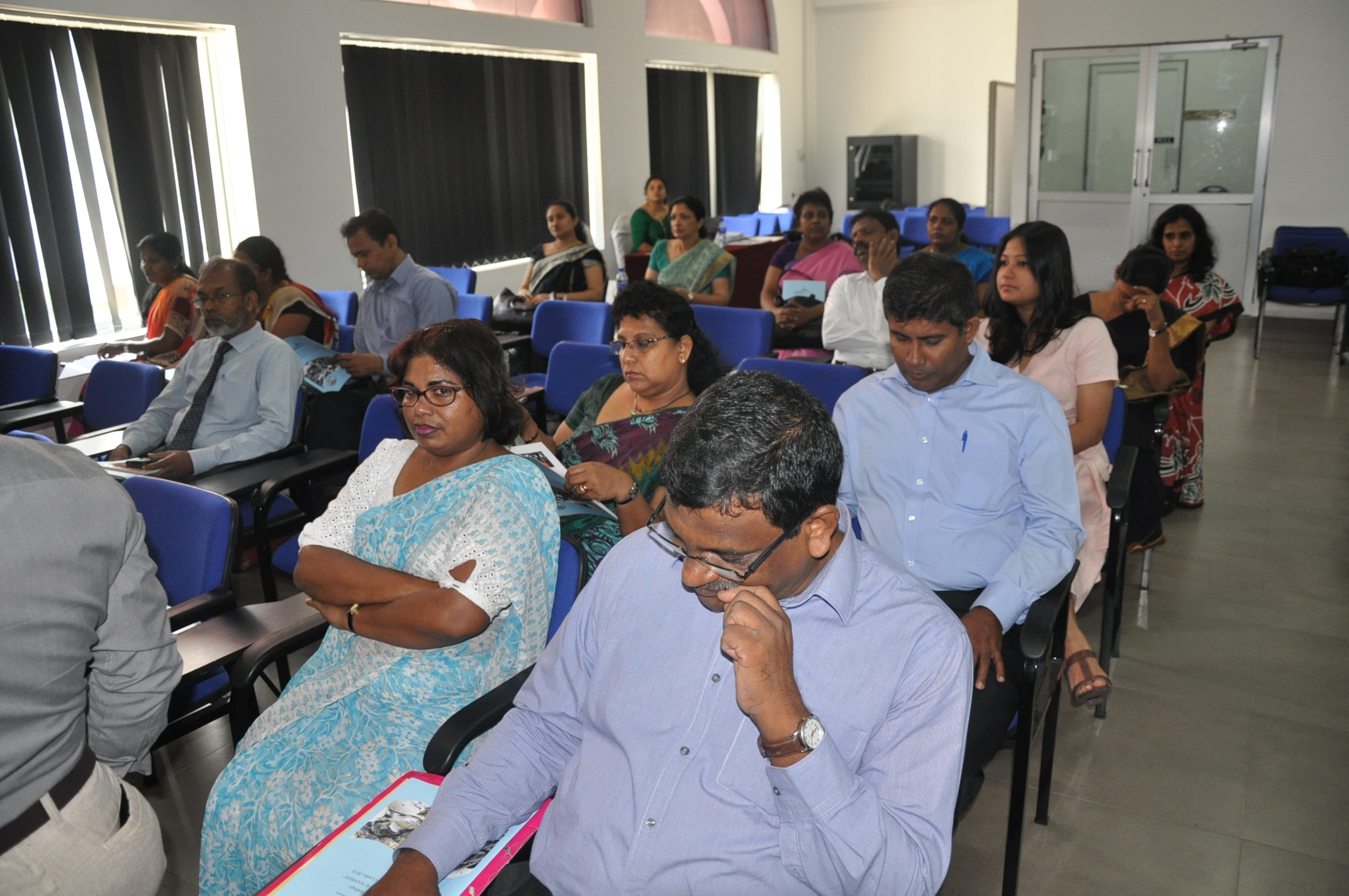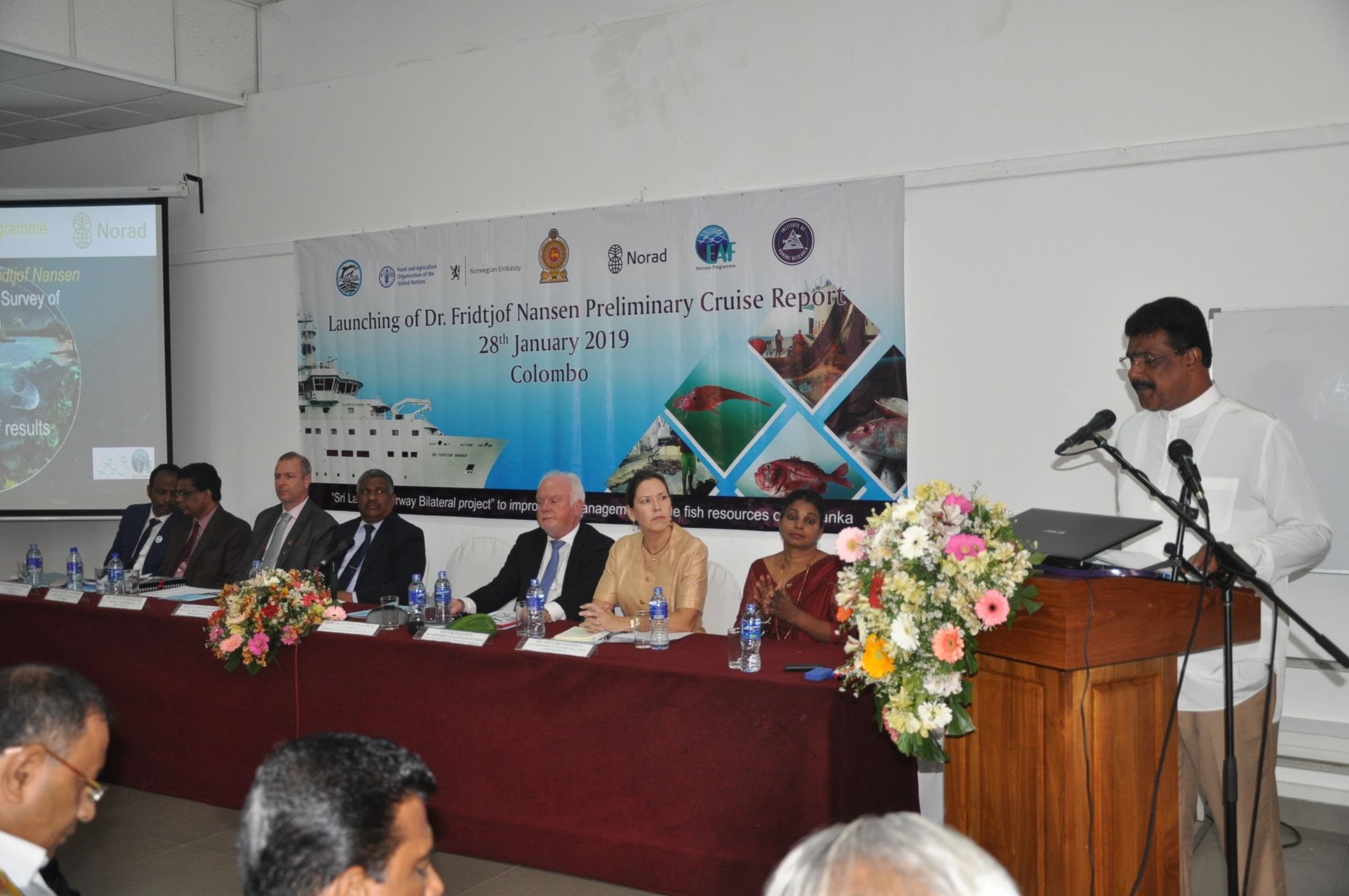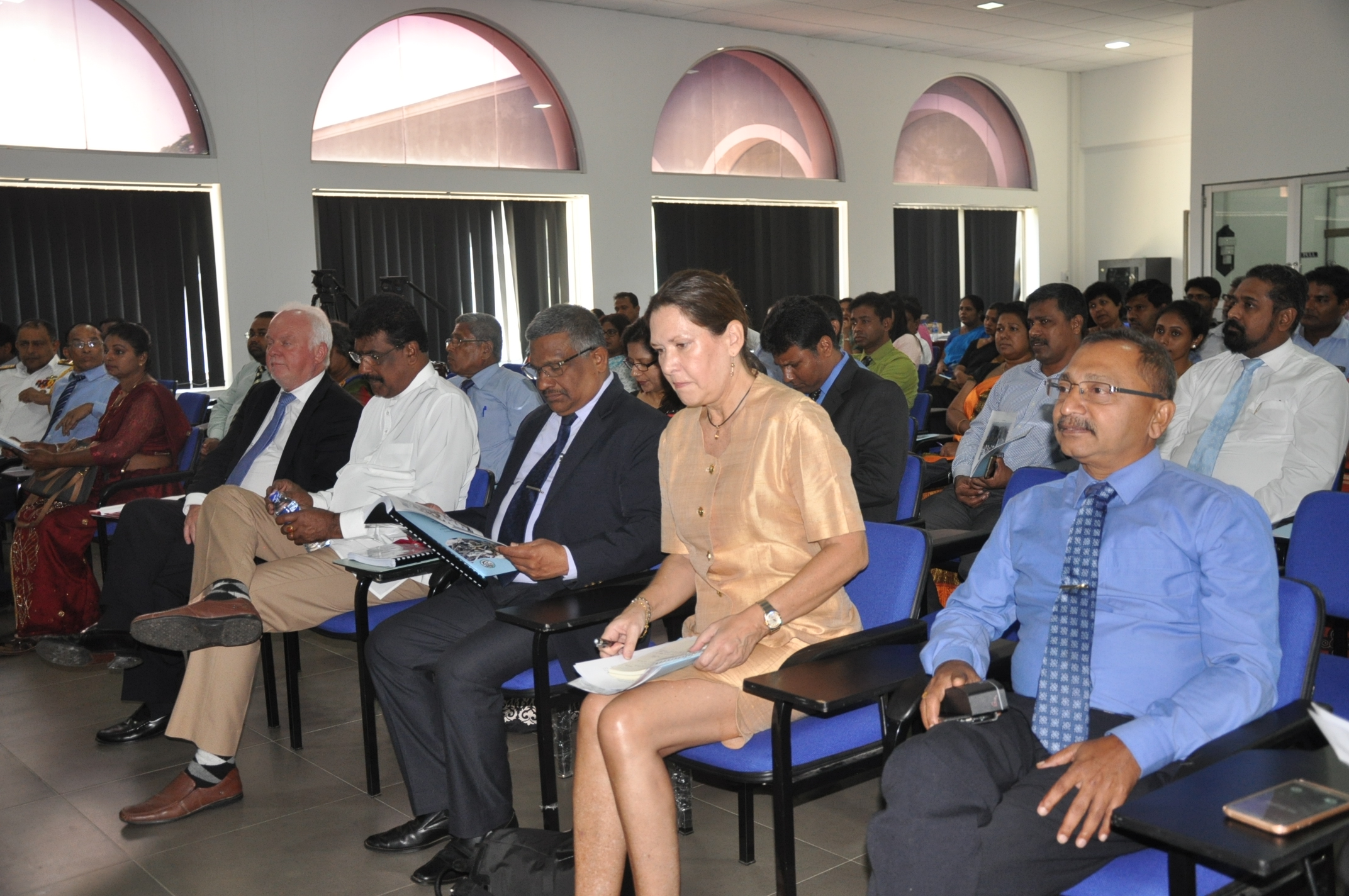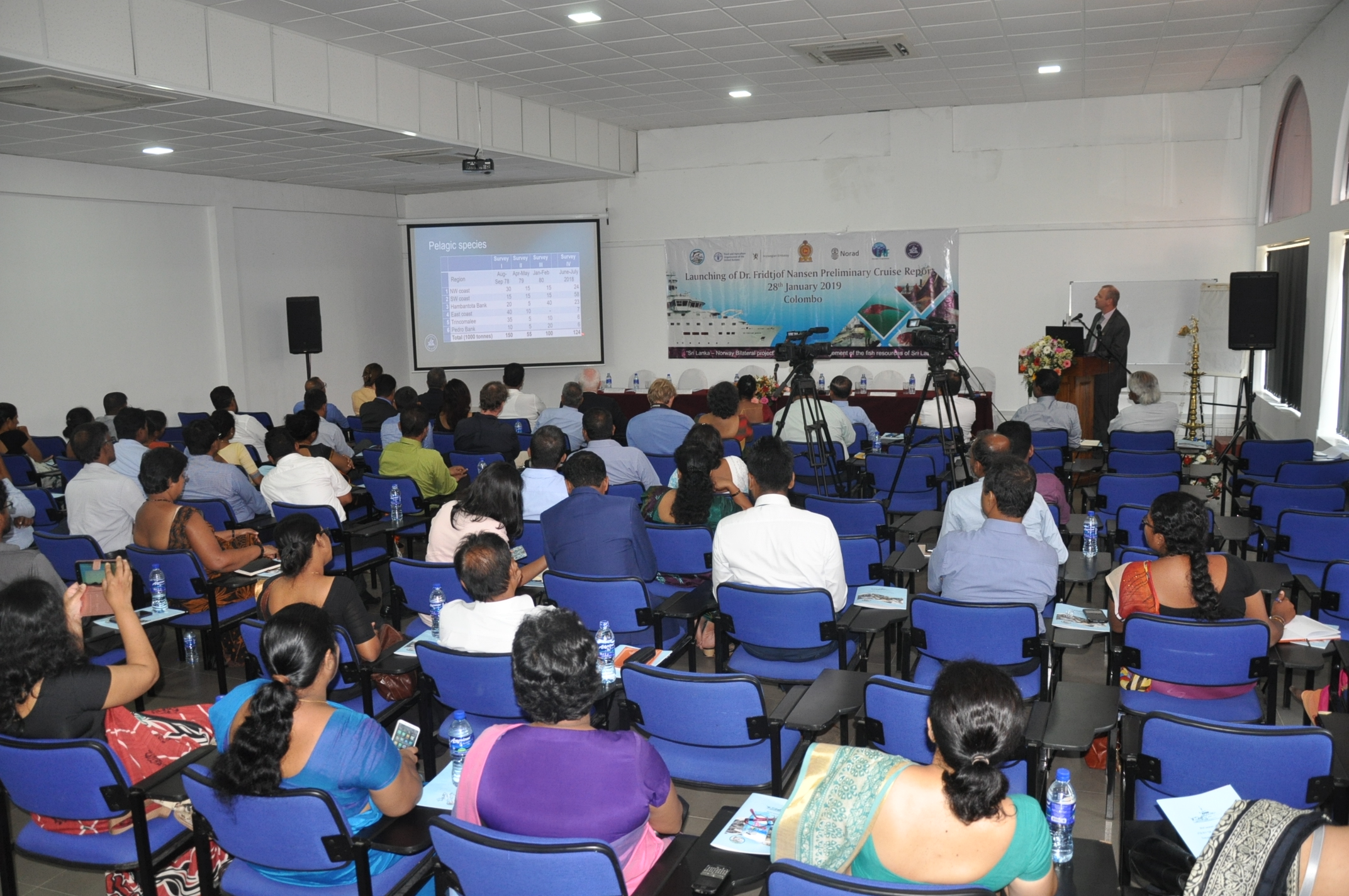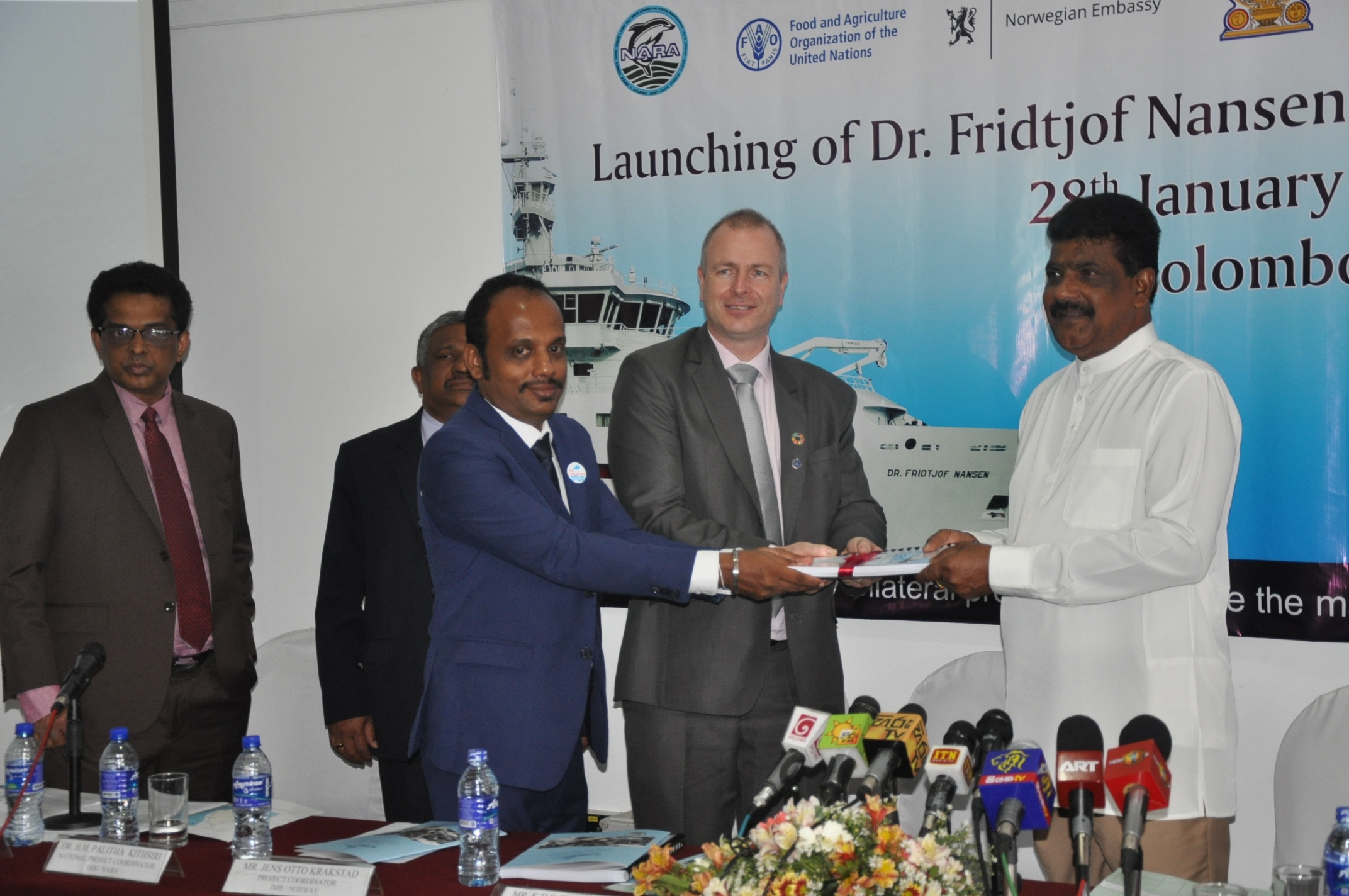Norwegian Research Vessel Dr. Fridtjof Nansen successfully completed an ecosystem survey in the coastal waters of Sri Lanka from June 23 to July 16, 2018. The survey was part of the EAF-Nansen Programme implemented by the Food and Agriculture Organization of the United Nations (FAO) in close collaboration with the Institute of Marine Research, Norway. The survey was funded by the Norwegian Agency for Development Cooperation (Norad). The aim of the survey last year was to carry out a marine resources survey around Sri Lanka with the expectation that the survey should provide Sri Lanka with up-to-date data, which will be useful for future management of the country’s fisheries resources. For that 29 Scientist from National Aquatic Resources Research and Development Agency and Scientists from Institute of Marine research were participated.
Data collected during the survey included physical and chemical oceanography, plastic pollution, plankton distribution and abundance, pelagic and demersal fish biomass, distribution and diversity, and distribution of marine mammals around Sri Lanka. Standard acoustic and swept area fish stock assessment methods were used to estimate the distribution, abundance, and biomass of the pelagic and demersal fish stocks in the region. Many important oceanographic related findings and new fish species were recorded during the survey. Total small pelagic biomass of Sri Lanka was estimated as 21000 tonnes and Clupeidae, Dussumieriidae and Engraulidae were dominant groups. Medium pelagic biomass was estimated as 101000 tonnes with the highest abundance found along the south and Demersal biomass was 53000 tonnes. The results reveal that the waters around Sri Lanka are contaminated with microplastics. The highest concentration of microplastics was found in the North Western region of Sri Lanka. Five species of cetaceans were recorded during the survey and Blue whale Balaenoptera musculus is the most commonly observed species. Integrated data overall depths showed the lowest zooplankton biomass was recorded on the North East coast while the highest biomass was observed in the South Coast of Sri Lanka. The zooplankton species diversity was highest in the South West and North West regions.
The launching of the preliminary cruise report was held at Sri Lanka Foundation on 28th January 2019 and the Chief Guest Hon. Dilip Wedaarachchi, State Minister, Ministry of Fisheries and Aquatic Resources Development, Mr. K.D.S.Ruwanchandra, Secretary, Ministry of Agriculture, Rural Economy Affairs, Livestock Development Irrigation and Fisheries and Aquatic Resources Development, His Excellency Thorbjørn Gaustadsæther, Ambassador of Royal Norwegian Embassy, Colombo, Ms. Nina Brandstrup, FAO Representative for Sri Lanka and Maldives, Ms. W.P. Sandanayake, State Secretary, Ministry of Fisheries and Aquatic Resources Development, Prof. Daya Edirisinghe, Chairman, NARA, Dr. H.M.P. Kithsiri, Deputy Director General Research and Development, National Project Coordinator, NARA, Mr. A.B.A.K.Gunaratne, Director/Monitoring and Evaluation, NARA, Mr. Jens Otto, Cruise Leader and the Project Coordinator, Institute of Marine Research (IMR), Norway, Dr. Prabath Jayasinghe, Local Cruise Leader and Senior Scientist, NARA and officials from the Ministry and Department of Fisheries and Aquatic Resources Development, National Aquaculture Development Authority and Sri Lanka NAVY participated for the programme.
